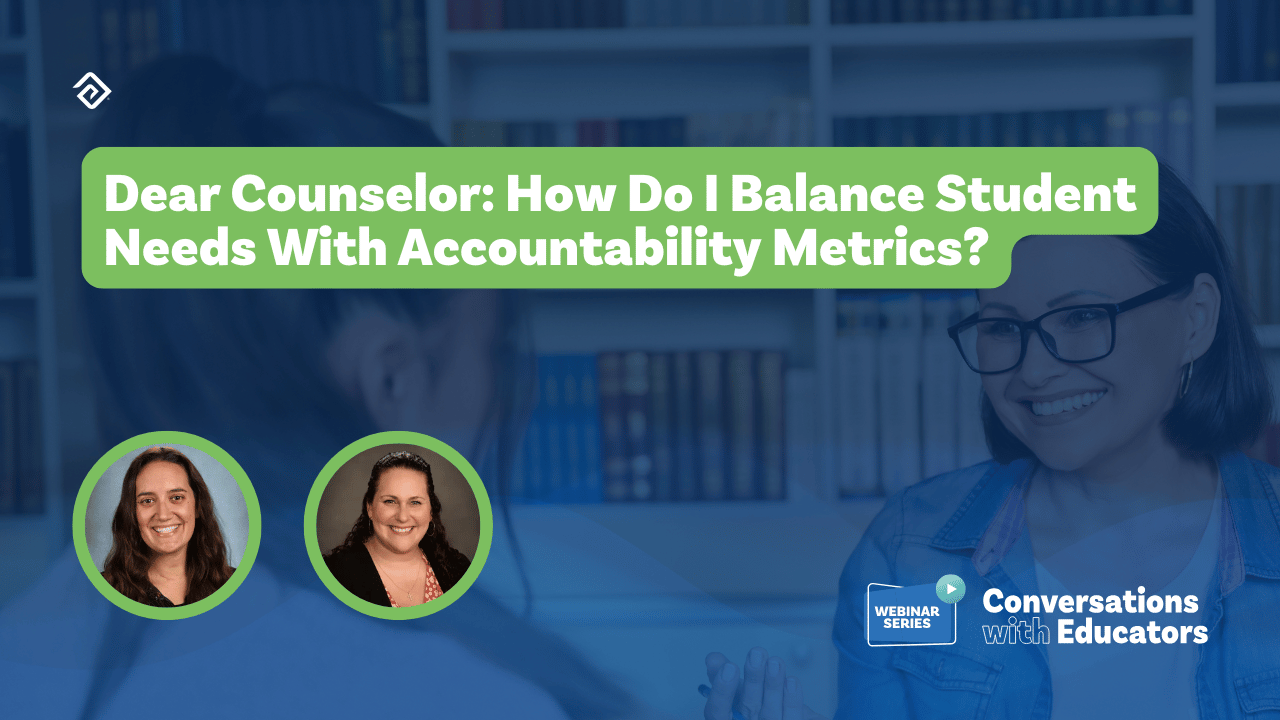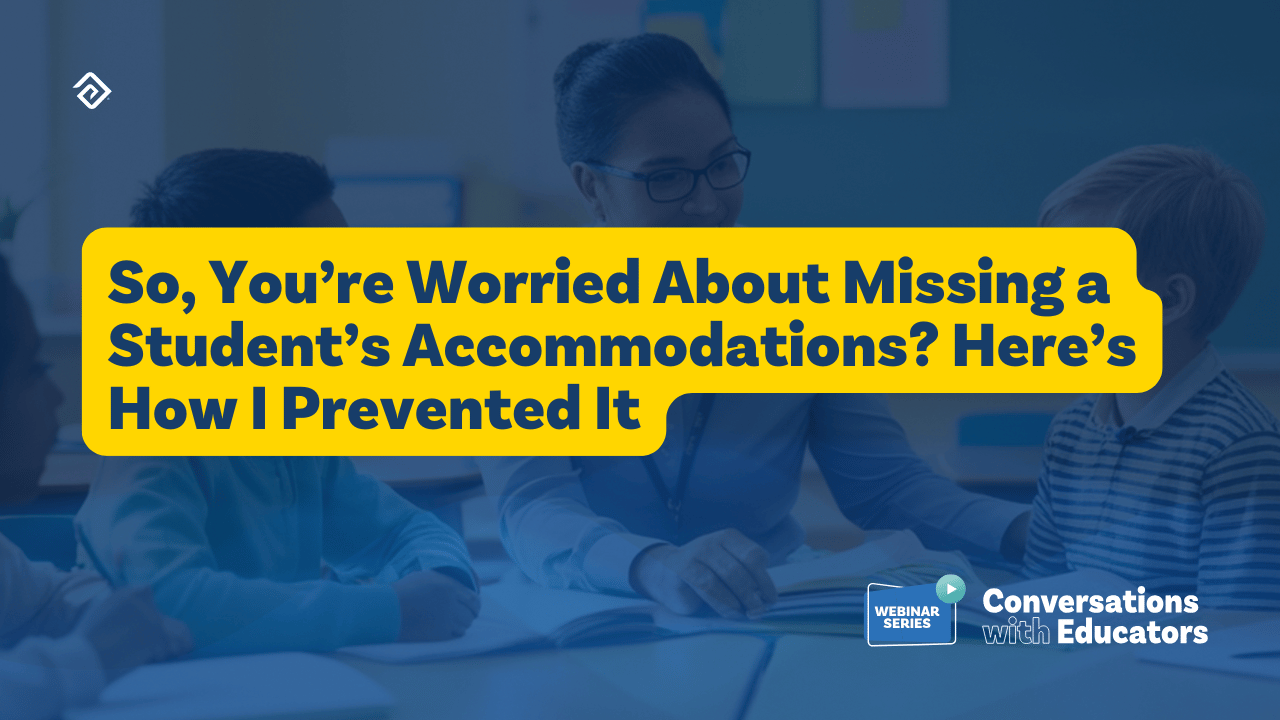Personalized Learning: A Teacher’s Guide
Personalized learning is a teaching model built on the idea that students have diverse learning styles and progress at different rates. Unlike the one-size-fits-all approach in some traditional teaching methods, teachers and students work together to design lessons based on individual student’s interests, learning abilities, and preferences.

What Is Personalized Learning in Education?
Personalized learning, or personalization, refers to various educational programs and approaches designed to meet the unique needs, interests, and backgrounds of individual students. It is an alternative to uniform teaching methods, where all students receive the same instruction, assignments, and assessments.
Also known as student-centered learning, the focus in personalized learning is on prioritizing individual student needs in educational decisions, leading to improved educational outcomes for students, teachers and schools.
Key Features of a Personalized Learning Plan
Personalized learning gives students special and improved learning experiences distinct from traditional classrooms. Here are some key features of personalized learning:
- Interest-Based Lessons: Tailored lessons reflecting students’ interests for a more engaging experience.
- Student Choice: Less time spent on lectures, granting students greater choice in their learning.
- Integration of Learning Technologies: Utilizes technologies to enhance the personalized learning experience.
- Individualized Content and Goals: Customized lesson plans that cater to each student’s specific needs.
- Collaborative Learning: Fosters collaboration among students with similar interests, enhancing social and leadership skills.
- Adjustable Pace of Instruction: Flexible instruction pace tailored to individual learning speeds.
Personalized Learning Models
Schools can follow various personalized learning models, including these widely used options:
1. Learner Profiles
In this model, schools maintain updated records detailing each student’s strengths, needs, motivations, progress, and goals. These profiles inform teachers’ decisions and help students and parents track progress, allowing timely adjustments to learning methods or goals.
2. Flexible Learning Environments
Schools using this model adapt the learning environment based on students’ preferred learning styles, including class setup and teacher allocation. The approach allows student needs to shape the learning environment.
3. Competency-Based Progression
With this model, schools continually assess students towards specific goals, emphasizing mastering competencies in knowledge domains and skills. Students choose how and when to demonstrate mastery, promoting continuous learning without a focus on traditional testing.
4. Personalized Learning Paths
Schools using this model assist students in customizing learning paths based on goals, progress, and motivations. Unique schedules include diverse learning methods, such as one-on-one tutoring, independent work, and project-based learning, allowing students to work at different paces with close teacher monitoring.
Examples of Personalized Learning in Schools
Students and staff can work together to personalize learning for students using different strategies that fit each student’s needs and preferences, including:
- Small Learning Communities: Schools may organize students into smaller groups, creating consistent teacher-student teams to understand individual learning needs.
- Advisory System: High school counselors may meet with small groups of students, offering academic, social, and postsecondary planning advice. Students may also have regular meetings with advisors, mentors, or peer mentors.
- Diverse Learning Pathways: High schools can offer various learning experiences, including career-related internships and dual-enrollment programs at other institutions, enabling students to simultaneously earn high school and college credits. These diverse pathways empower students to customize their education based on their interests, abilities and goals.
- Mixed-Ability Grouping: Schools can move away from grouping students by perceived ability and, instead, adopt mixed-ability grouping. Teachers can use personalized instructional strategies to cater to diverse ability levels within the same class.
- Student Voice: Schools can include “student voice” in the learning process, allowing students to make decisions about their education based on their choices, interests, and goals.
- Alternative Educational Approaches: Schools can adopt varied instructional methods like digital and online learning options to cater to diverse student preferences.
- Personal Learning Plans and Portfolios: Students make and keep personal learning plans for their academic and career goals, and teachers use these tools to help with personalized teaching and support.

Benefits of Personalized Learning
Time Efficiency
Personalized learning helps students understand new topics faster by cutting out unnecessary information. It avoids wasting time on concepts that don’t benefit the student or focusing on concepts they have already learned and mastered
Enhanced Student Engagement
When lessons align with a student’s interests, as is the case in personalized learning, it makes learning more enjoyable. Students are more likely to remember and engage better with content directly related to their daily tasks.
Better Knowledge Retention
Personalized learning builds on what learners already know and helps them remember information for longer. Connecting the pieces of information makes it easier to recall because they link to what the student already understands.
Mastery of School Subjects
Tailoring learning to students’ styles and pace ensures a comprehensive understanding of each curriculum topic. Unlike traditional classrooms, personalized learning allows students to master lessons at their preferred speed, preventing anyone from falling behind.
Increased Motivation
Learning skills that matter keeps students motivated, especially when the content includes practical tips or immediately useful information.
Encourages Collaboration
In personalized learning, teachers and students team up to set goals and plans. This helps everyone work together on assignments and projects, making students better at collaborating with others.
Improved Student Feedback
Technology in personalized learning quickly provides feedback, helping teachers, parents, and students promptly address learning gaps and allowing teachers to track how well students understand the lessons.
Better Learning Outcomes
Studies reveal that personalized learning leads to improved results for students. Offering content that’s relevant, interesting, and easy to remember not only makes learning enjoyable but also helps students perform better academically.
Soft Skills Development
Personalized learning goes beyond academics, focusing on essential soft skills such as communication, collaboration, empathy, and creativity. These skills are crucial in preparing students for the future job market, where adaptability is key.
The Role of Technology in Personalized Learning
Technology is a key supporter in personalized learning, where, unlike solely data-driven models, it doesn’t just mean giving students their devices. Instead, it plays a crucial role in supporting the learning process without taking charge or driving it.
The focus remains on the learner’s motivation, engagement, and voice, with technology serving as a tool to enhance these aspects. Research shows that when learners have a say in how they learn, they’re more motivated and engaged. In personalized learning, technology empowers learners for a more tailored and engaging educational experience.
Transforming Education Through Personalized Learning: Exploring Our Suite of Educational Software Tools
For schools looking to incorporate personalized learning and revolutionize their teaching methods, here is our suite of innovative educational software tools that can transform traditional classrooms into dynamic, student-centric learning environments:
- Embarc: Connects learning goals to the continuous process of education, making lessons fit the different needs of K-12 students.
- Cardonex: Makes scheduling easy, so 90% or more of students quickly get their first choice classes., creating a more personalized school experience that fits their educational needs and goals
- TestHound: Helps teachers coordinate tests for thousands of students, considering various needs of students like reading ability or physical disabilities.
- Pathways: Helps students and staff work together to plan paths to graduation based on each student’s goals and aspirations.
- Evaluation: Documents essentials in teacher evaluations, recognizing strengths and areas of improvement, as well as professional development, fostering better teaching methods.
These tools collectively empower teachers to embrace personalized learning by creating an educational landscape that caters to the unique strengths, preferences, and goals of each student.
Through these innovative solutions, teachers can foster a more personalized and responsive learning experience, ensuring that education is not just about teaching but about meeting individual learning needs and nurturing every student’s potential.If your school is interested in new ways to improve the learning experience for children, you may also be interested in automating tasks and streamlining processes so that your teachers have more time to teach. Education Advanced offers a large suite of tools that may be able to help. For example, four of our most popular and effective tools are:
- TestHound, our test accommodation software, helps schools coordinate thousands of students across all state and local K-12 school assessments while taking into account dozens of accommodations (reading disabilities, physical disabilities, translations, etc.) for students.
- Pathways, our college and career readiness software, helps administrators and counselors create, track, and analyze graduation pathways to ensure secondary students are on track to graduate.
- Evaluation, our teacher evaluation software, which documents every step of the staff evaluation process, including walk-throughs, self-evaluations, supporting evidence, reporting, and performance analytics.

More Great Content
We know you'll love





